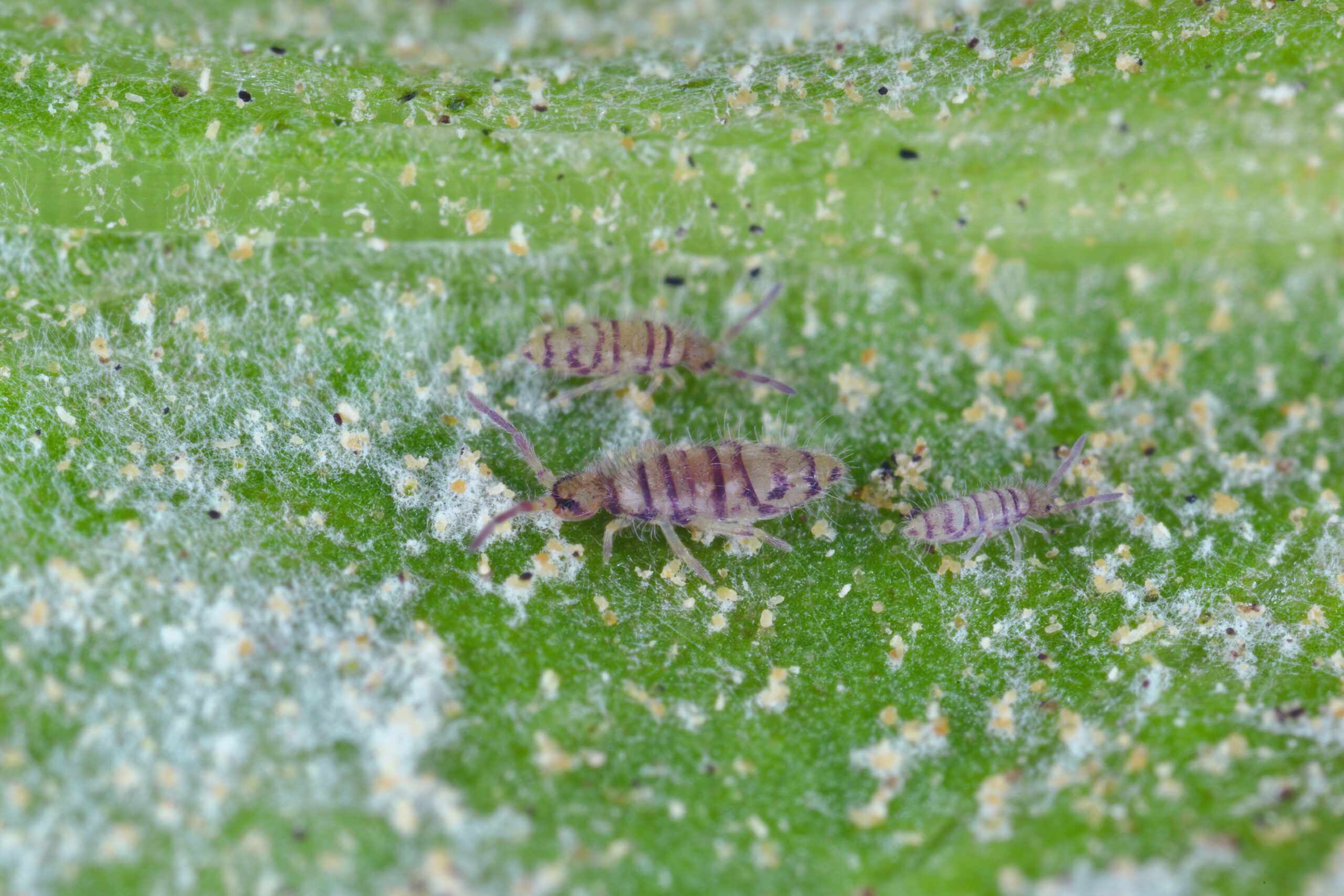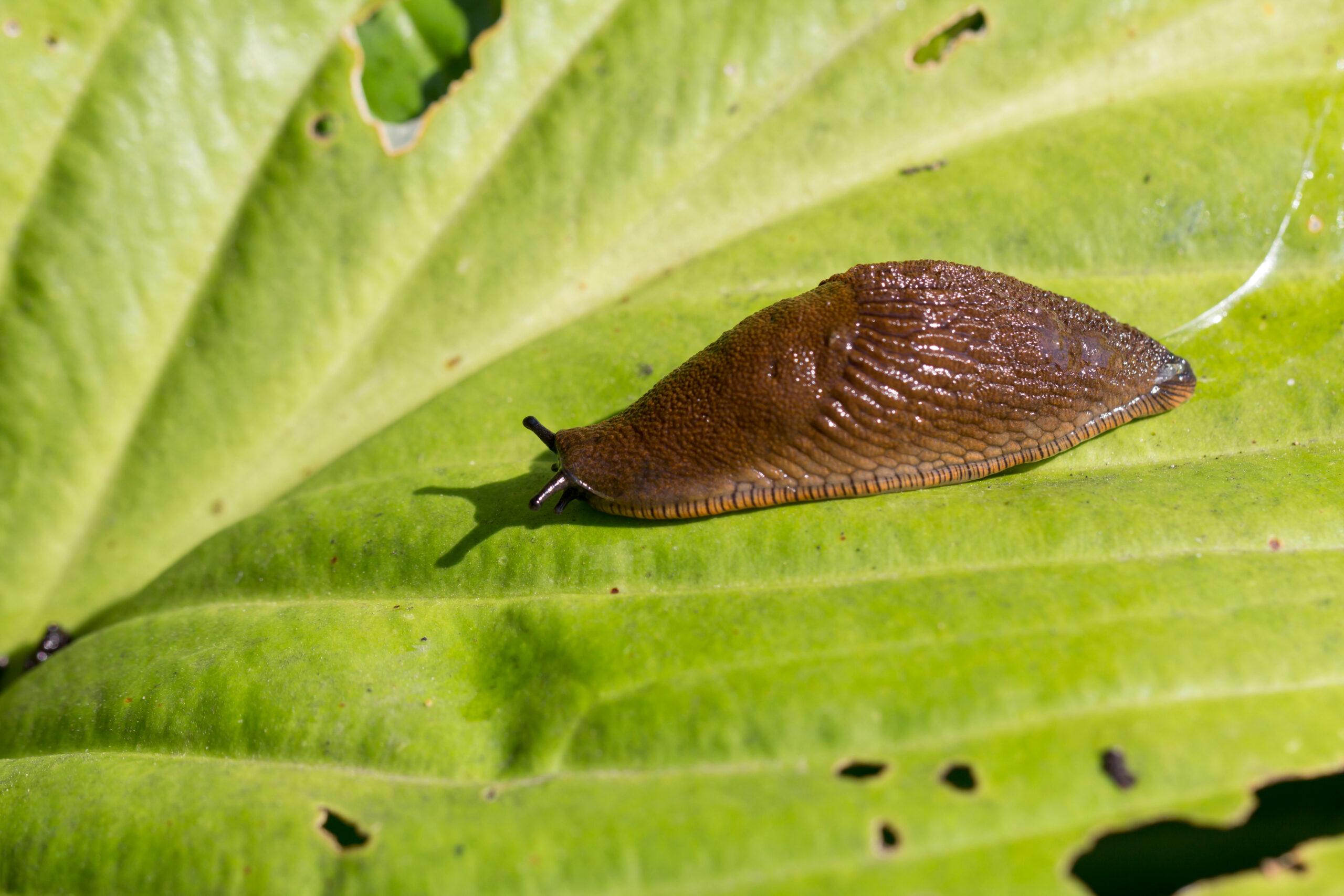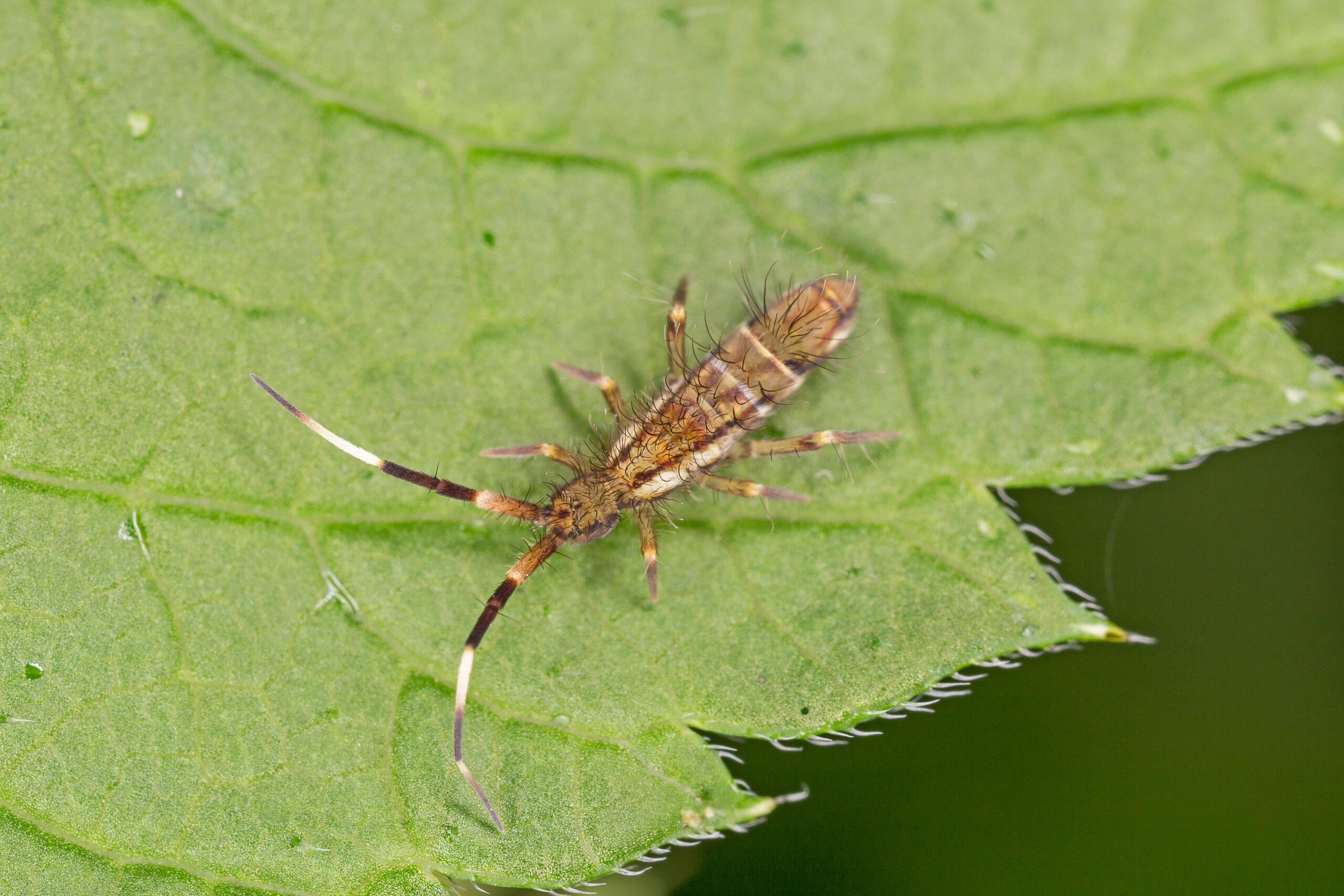Pests That Love Overwatered Plants
Pests That Love Overwatered Plants
It’s no secret that pests love plants, trees, and flowers of all kinds. Some critters seek them out as a reliable food source throughout the warmer months, while others use the greenery as a home base where they can safely rest and lay their eggs. Each species has their own preferences of the type of plant, amount of sunlight, and size of flowers or fruits. But did you know that some pest species even prefer for a plant to have a certain amount of moisture? Some insects like the greenery to be dry as a bone, some want the soil to be completely damp, and some are content with any amount of moisture in between those extremes. Since today (May 30) is National Water a Flower Day, let’s look into a few pests that prefer for their plants to be overwatered, as well as some ways to prevent them from wreaking havoc in your yard.
Fungus Gnats

Damage Level: Large numbers cause roots to rot; will damage or kill seedlings and young plants
These gnats may be the most common visitors of overwatered plants. But considering the fact that gnats are already a popular pest in general, fungus gnats are not very noticeable unless they invade in huge numbers. These dark-colored pests are about 1/8 of an inch and resemble fruit flies up close. Fungus gnats stay near overwatered soil at all times because they need a lot of moisture to survive. They eat the roots and fibers of overwatered plants, and do not deal much damage to fully-grown plants since these greens are more fortified against invaders. But seedlings and new plants are vulnerable to the feedings of fungus gnats, and these young plants are often targeted by the gnats for this reason.
Thankfully, major fungus gnat infestations are uncommon. But they will multiply quickly if the plant continues to be overwatered and if the existing gnat population isn’t controlled. Fungus gnats lay about 300 eggs within the damp soil, and the eggs will hatch in less than a week. Once the young fungus gnats begin eating the decaying material within the soil, they take about 3 to 4 weeks to grow into adult gnats. In all of their life stages, fungus gnats enjoy decaying and organic matter. This diet would not be an issue, if not for the fact that otherwise healthy plants can begin to decay once they have too much water. The clearest sign of an invasion is if you see many gnats flying around a specific plant, especially if they make their way into the soil.
Springtails

Damage Level: Not too bad in small groups, but can devastate young plants in huge numbers
Springtails are common insects that are found on most online lists of annoying garden pests. They are also tiny and easy to miss upon first glance. Springtails are about 1/5 of an inch long and are either white or black, depending on the species. These insects get their name from their erratic jumping patterns, as they lack wings and therefore will jump to get around or as a defense tactic. Most species favor decaying material, so they are not always considered to be prominent crop pests. But other types, like garden springtails, eat living plant tissue and can ruin young plants with enough days of constant feeding.
The general diet of springtails includes seedlings, soft plant parts, decaying matter, and pollen. They may start out by eating different parts of a plant, then move on to a different organic material if they need different nutrients. Springtails lay up to 400 eggs throughout their lives, and this number will be higher if they are well-fed. If there is a compost pile in the immediate area, there’s a good chance that the countless springtails would head over there soon. They also thrive in humidity, so regions that experience a lot of humidity will see more springtails taking advantage of any plants that are already damp. A few springtails will not deal much damage to healthy plants, but a multi-generational group of springtails can ruin a plant beyond the point of return.
Slugs

Damage Level: Dangerous to any plant/crop; eats multiple times their own weight each night
This slimy creature is a huge jump from the previous tiny flying insects. Slugs (and snails) are extremely common after it rains, as they favor cool and wet conditions above everything else. Despite their unassuming appearance, slugs are one of the most destructive garden pests around. Slugs are active at night, and they gorge themselves every night when they emerge to feed. During the day, slugs hide in the damp soil that surrounds their favorite food sources. This is how they stay safe from predators and dangerous weather, and their dark brown coloring blends in with the soil perfectly. But slugs can be sniffed out by larger animals, like curious cats and dogs. If your pet likes to explore the yard when they’re outside, it is even more important to get rid of slugs as soon as possible. Cats and dogs get sick after eating slugs due to the parasites within the pest, so slugs are much more dangerous than they seem.
Slugs also lay their eggs in soil, and the caveat is that the soil must be raked or moved enough to satisfy them. Adult slugs are content with any soil, but their eggs need divots and small gaps to be safely hidden from any prowling predators. The slug’s famous slime trail is not only their way to grease their paths, it is also a mucus secretion to protect their skin from the harsh elements of nature. If slugs are not controlled, they will continue reproducing in the same area that they feed from, thus resulting in the devastation of multiple plants at the (nonexistent) hands of slugs. Their mouths have a radula, which is essentially a tongue with teeth-like features. This helps them to chomp through plants with ease, but they still favor overwatered plants for the moisture and softness.
Prevent & Protect

There are plenty of ways to prevent these pests, as well as any garden critter, from completely ruining your greenery. The first is to not overwater any plants, which is easier said than done. After all, overwatering is the primary cause of houseplant deaths, so it is a much more common issue than we may think. A good rule of thumb is that there shouldn’t be any standing water in the soil after you finish watering the plant. Some plant species do not need much water anyway, so make sure to do some research on the specific plants in your yard if there is any question on how much water to give them.
Plants are at their most vulnerable against pests when they are either freshly planted or have been outside for months without monitoring. This is why it’s an excellent idea to carefully check the plants you find at a garden supply store before purchasing, as it is very frustrating to unknowingly buy an infested plant. Also, the type of soil used when re-potting a houseplant makes a difference. We recommend using bagged soil that you can buy at the hardware store rather than grabbing some soil from the backyard, since you could accidentally bring tiny pests indoors in that fistful of dirt. Finally, keep an eye on all of the plants for any unusual activity. Plants will show signs of infection or failing health fairly quickly, so it helps to be alert and treat any plants that don’t look as good as normal. Some common signs of a pest problem include wilting, yellowing leaves, spotting, and losing leaves. Trust us: your plants will definitely thrive under the extra care that goes into protecting them from tiny pest invaders!
Put the Green Back Into Your Plants with Green!
As the weather continues growing warmer, pests will only become more active than they already are. Insects and arachnids are cold-blooded, so their energy levels are completely dependent on the conditions of their environment. Whether you are looking to prevent future pest problems or to solve a current pest issue, Green Pest Services is here to serve you! We only use eco-friendly treatments that treat for dozens of pests without the inclusion of dangerous chemicals. We believe that effective pest control does not need to come at the expense of the safety and comfort of families, pets, and the ecosystem. We guarantee long-term results, and we know that you will be satisfied with our thorough services! Contact us to learn more about how our experienced technicians can keep those greedy pests away from your beautiful backyard this growing season.
Citations
Albert, S. (2022, December 21). Common garden pests that emerge after rain. Gardening Know How. Available at https://www.gardeningknowhow.com/plant-problems/pests/insects/pests-and-rain.htm (Accessed on April 5, 2023).
Dillion, D. (2019, February 18). Fungus gnats – a common problem of overwatered houseplants. NC Cooperative Extension. Available at https://union.ces.ncsu.edu/2019/02/fungus-gnats-a-common-problem-of-overwatered-houseplants/ (Accessed on April 5, 2023).
Koch, R.L., Carrillo, M.A., & Hutchison, W.D. (n.d.). Springtails. University of Minnesota: VegEdge. Available at https://vegedge.umn.edu/insect-pest-profiles/springtails (Accessed on April 5, 2023).
Scott, J.M. (2007, December). Common houseplant insects & related pests. Clemson Cooperative Extension: Home & Garden Information Center. Available at https://hgic.clemson.edu/factsheet/common-houseplant-insects-related-pests/ (Accessed on April 5, 2023).
Slugs. (n.d.). Terro. Retrieved April 5, 2023, from https://www.terro.com/slugs
8 Creative Ways to Have a Pest-Free Fourth of July
8 Creative Ways to Have a Pest-Free Fourth of July 8 Creative Ways to Have a Pest-Free Fourth of July Summary: The Fourth [...]
A Simple Guide to Preventing Stinging Pests
A Simple Guide to Preventing Stinging Pests A Simple Guide to Preventing Stinging Pests Summary: Stinging insects are more active in warm weather, [...]
These 10 Natural Mosquito Repellents Can Actually Help
These 10 Natural Mosquito Repellents Can Actually Help These 10 Natural Mosquito Repellents Can Actually Help Summary: Natural mosquito repellents are easier to [...]
How to Get Rid of Carpet Beetles
How to Get Rid of Carpet Beetles How to Get Rid of Carpet Beetles Summary: Carpet beetles are sneaky pests that don’t usually [...]
How Do Roaches Affect Asthma and Allergies?
How Do Roaches Affect Asthma and Allergies? How Do Roaches Affect Asthma and Allergies? Summary: It’s no secret that pests impact human health, [...]
These 5 Carnivorous Pests Might Surprise You!
These 5 Carnivorous Pests Might Surprise You! These 5 Carnivorous Pests Might Surprise You! Summary: There are many eco-friendly ways to prevent pests, [...]

